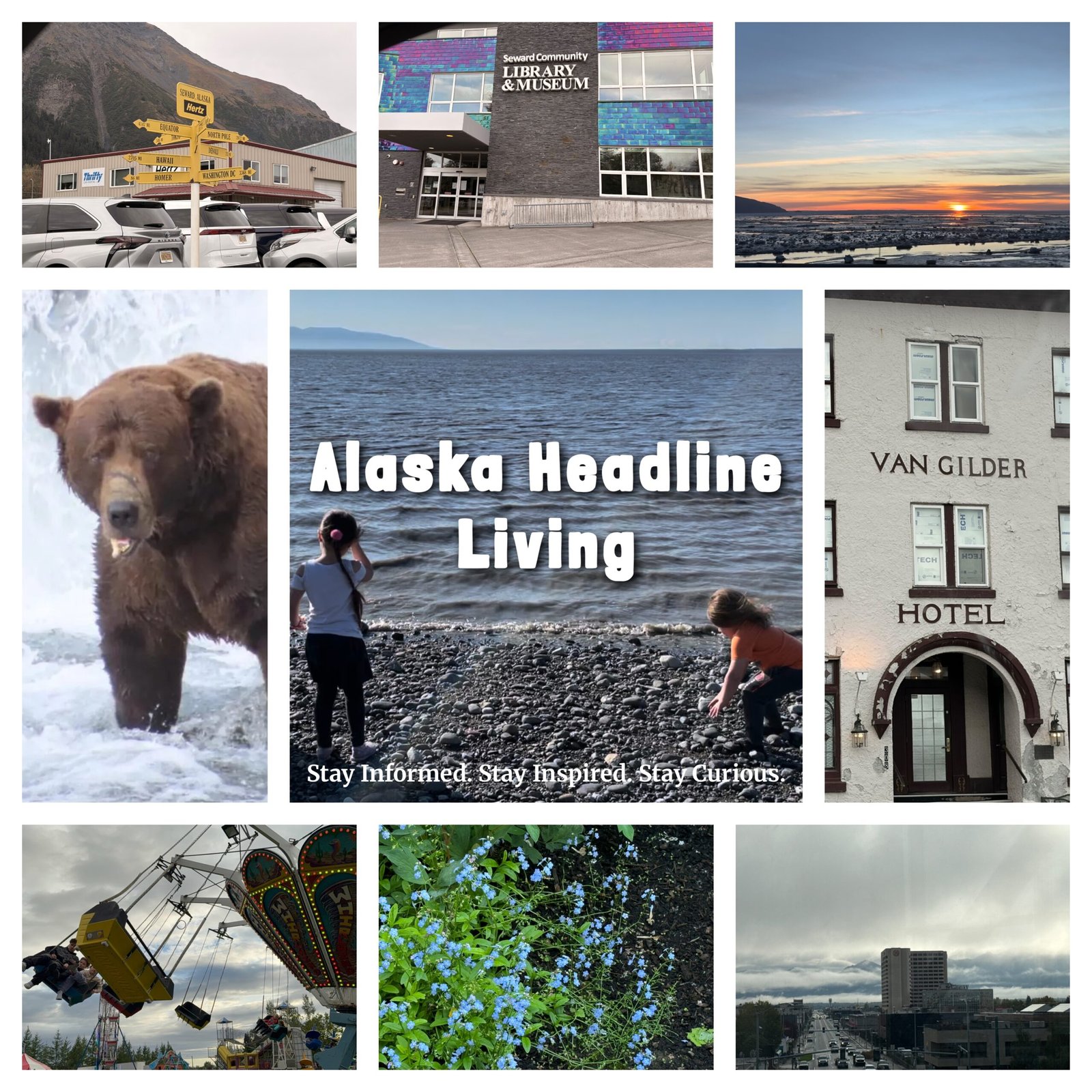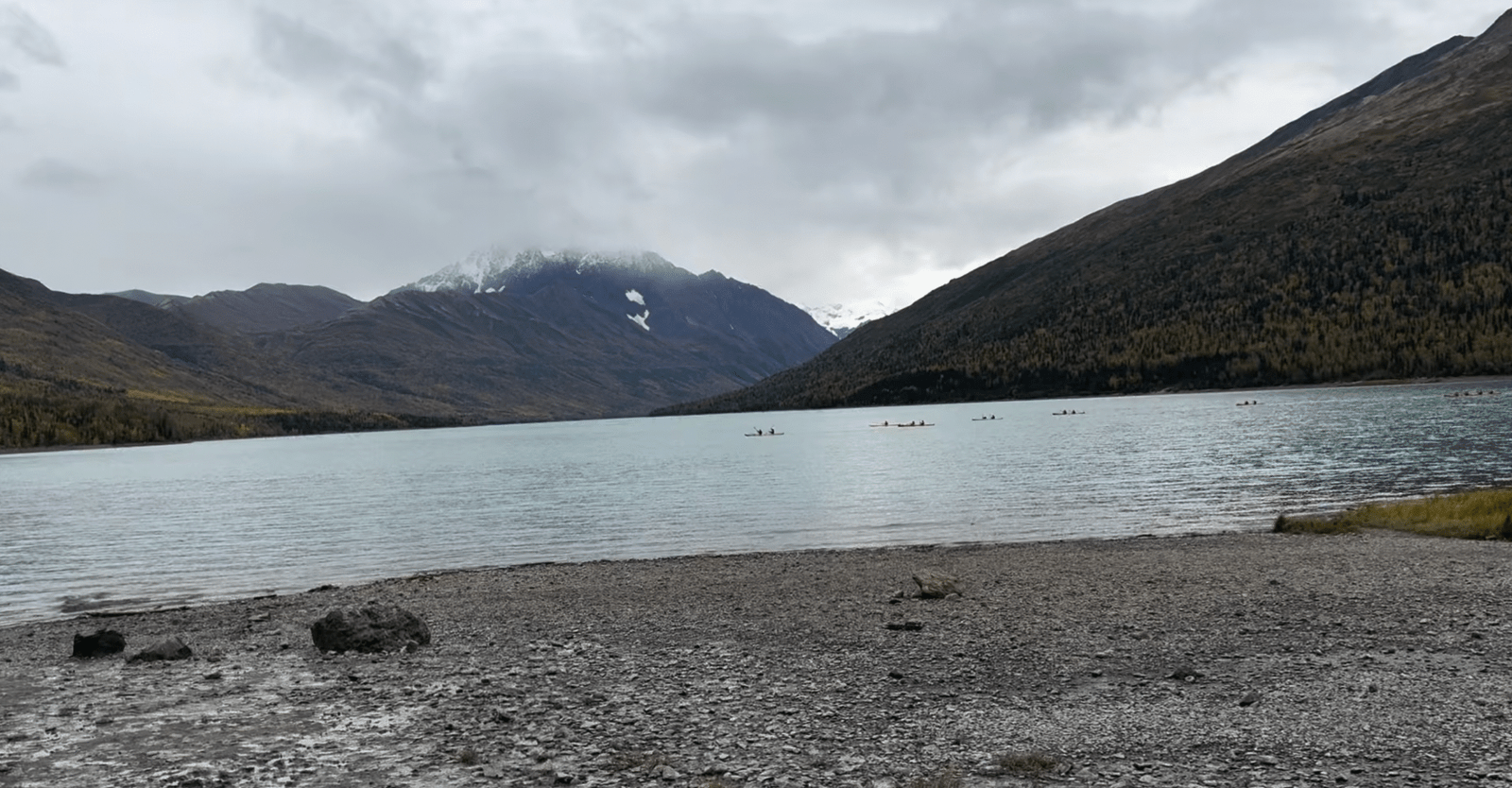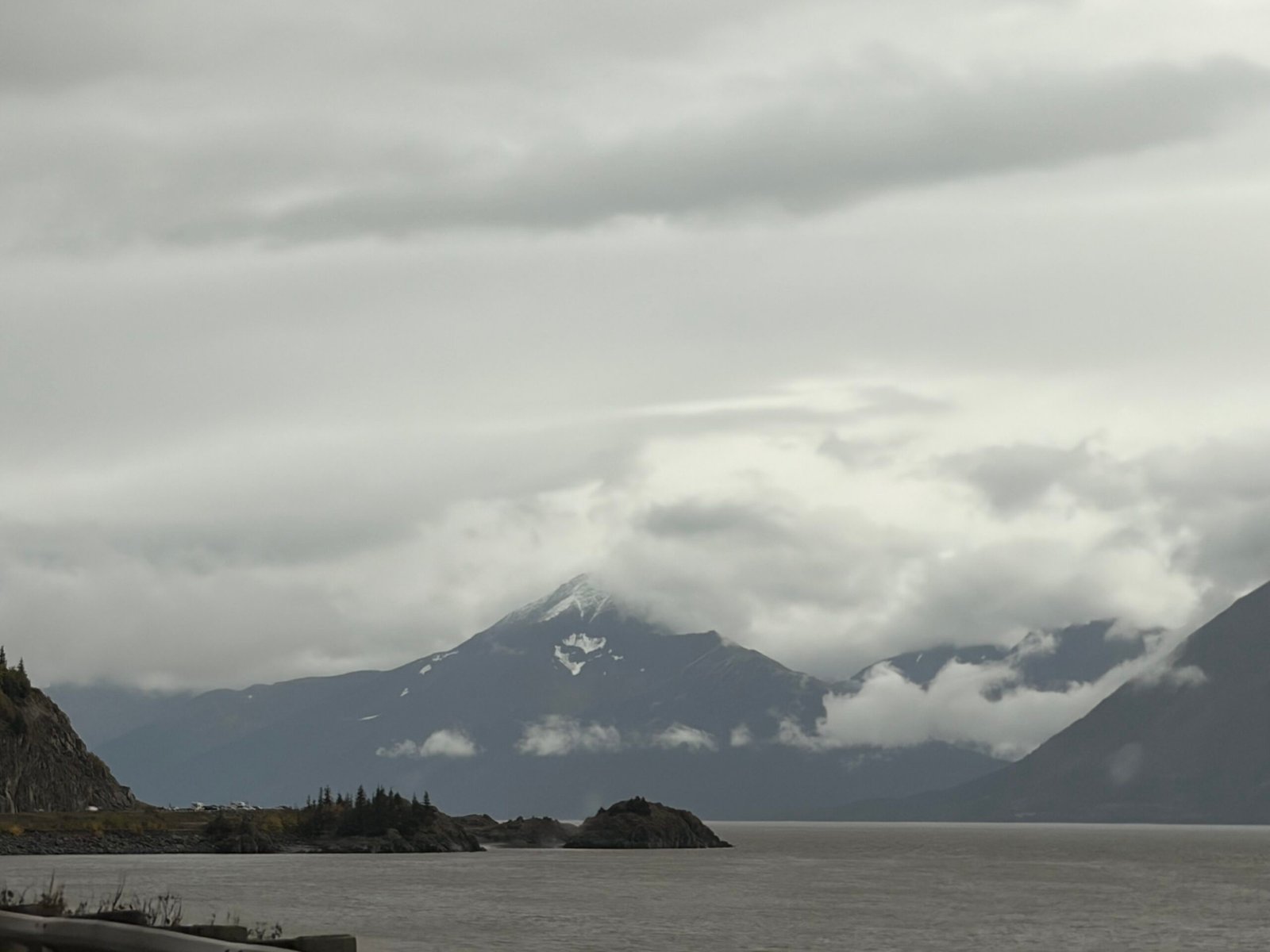By Gina Hill, Alaska Headline Living
The Confluence of Crisis and Opportunity
Alaska’s strategic landscape in October 2025 stands at a crossroads — a convergence of renewed industrial ambition, accelerating climate disruption, and deep structural dependence on unstable federal systems.
The state has reentered the national spotlight following President Trump’s reversal of the Ambler Road denial, reopening access to one of the nation’s richest undeveloped mineral regions. The move has energized Alaska’s resource sector but ignited a wave of legal and political backlash.
Meanwhile, Western Alaska braces for another powerful Bering Sea storm, fueled by delayed sea ice formation and warming ocean waters. And as Washington’s political gridlock threatens the lifelines of rural Alaska, the near-shutdown of the Essential Air Service program underscores how fragile the state’s connectivity remains.
Together, these forces define the tension at the heart of Alaska’s future: development versus resilience, opportunity versus vulnerability.
Ambler Road: A Presidential Reversal Reignites a High-Stakes Battle
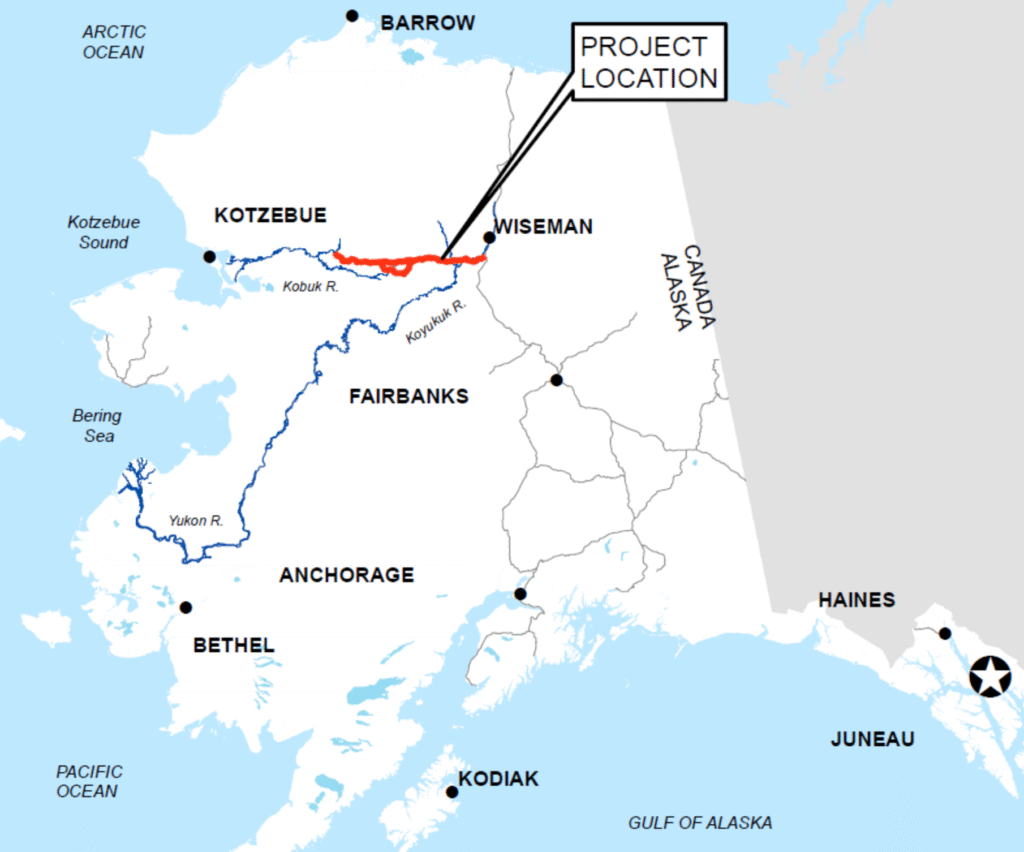
On October 6, 2025, President Trump approved an appeal to restart the Ambler Access Project, a 211-mile industrial road designed to connect the Dalton Highway to the Ambler Mining District in northwest Alaska.
The decision, made under Section 1106 of the Alaska National Interest Lands Conservation Act (ANILCA), overturned the Biden administration’s 2024 “no-route” determination and reinstated the project’s federal right-of-way.
The move marks the first known use of ANILCA’s presidential appeal authority—a rare legal mechanism allowing the White House to directly override agency denials. Federal agencies are now directed to fast-track clean water and other permits.
Supporters, including Governor Mike Dunleavy and Alaska’s congressional delegation, hailed the reversal as a decisive step toward U.S. mineral independence and economic revival. “This will unleash development opportunities, create jobs for Alaskans, and secure access to strategic minerals,” Dunleavy said.
But critics say the decision short-circuits environmental review and opens the door to years of litigation. Trustees for Alaska, representing tribes and conservation groups, argue the administration has “wielded this presidential power like a cudgel,” ignoring local opposition and environmental risks.
The project, led by the Alaska Industrial Development and Export Authority (AIDEA), aims to provide controlled industrial access to deposits of copper, cobalt, zinc, silver, and lead, materials vital for batteries, renewable energy, and defense technologies.
The U.S. government also announced a $35.6 million investment in Trilogy Metals, giving it roughly a 10% equity stake in the mining company, a move critics see as further politicizing the project.
Yet the road’s physical route still depends on cooperation from Alaska Native regional corporations. Both NANA Regional Corporation and Doyon Ltd. own key segments of land along the proposed route and have declined to endorse the project, signaling that any progress will hinge on complex negotiations over access and community consent.
Climate at the Edge: Storms, Sea Ice, and Western Alaska’s Fragility
Even as political battles unfold over the Ambler Road, Alaska’s western coastline is facing a more immediate crisis.
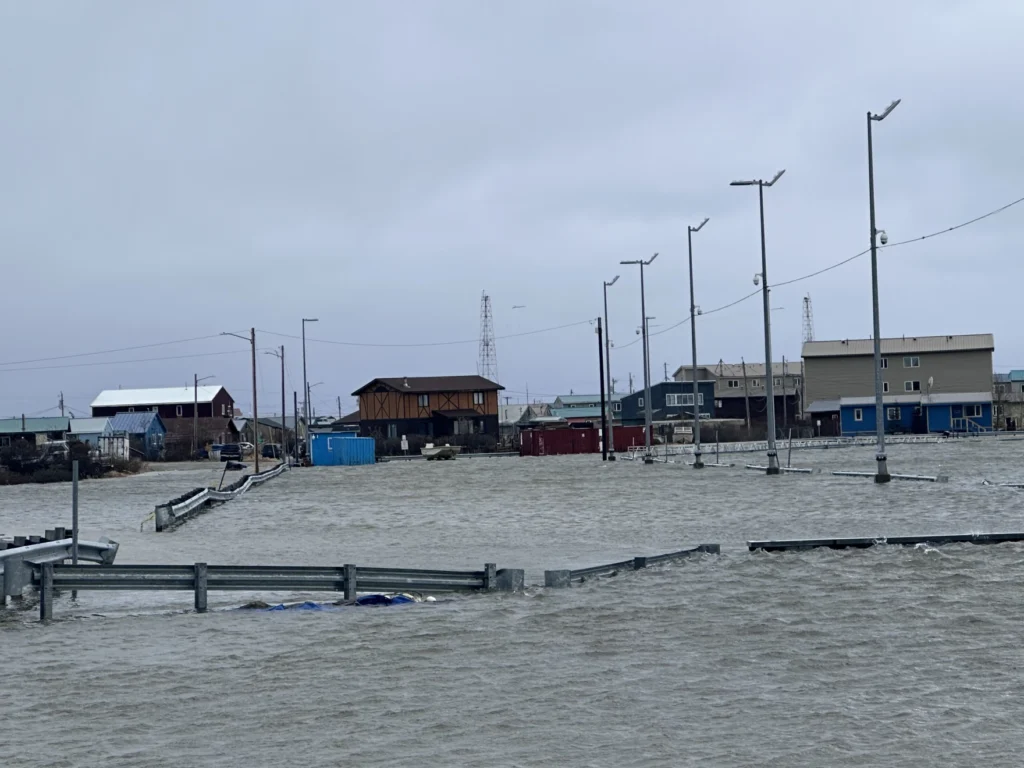
The National Weather Service warns that the remnants of Typhoon Halong are moving into the Bering Sea, expected to bring high winds, storm surge, and coastal flooding to the Bering Strait and Kotzebue Sound through the weekend.
This follows another severe system earlier in the week that forced evacuations in Kotzebue. Forecasters warn that tides could first drop by several feet, then surge dramatically within 24 hours—a pattern reminiscent of the destructive Ex-Typhoon Merbok in 2022.
Scientists say the increasing severity of fall storms stems largely from the delayed formation of sea ice, which historically shielded Alaska’s coasts from wave action through the winter. With ice now forming later each year, the state faces an expanding window of coastal vulnerability.
Since 2020, Alaska has declared nearly three dozen weather-related disasters, twice as many as the previous five-year period. Communities are now forced to rethink traditional infrastructure—from flood protection to permafrost-threatened ice cellars used for subsistence food storage.
Connectivity on the Brink: The Essential Air Service Crisis
While storms threaten Alaska’s physical infrastructure, Washington’s dysfunction has shaken its logistical backbone.
During the recent federal government shutdown, the Essential Air Service (EAS) program, the subsidized flight network that connects 65 rural Alaska communities, came within days of collapse.
The U.S. Department of Transportation warned that funding would expire by October 12, forcing airlines to operate “at their own risk.” A last-minute $41 million transfer on October 8 extended funding through November 2, temporarily averting disaster.

For many communities off the road system, EAS flights are the only link to food, medicine, and emergency evacuation. As Senator Lisa Murkowski put it, “In Alaska, these flights define what ‘essential’ really means.”
But the episode revealed how dependent Alaska remains on federal appropriations vulnerable to political stalemate. The state is now exploring contingency options to guarantee continuity of service during future shutdowns.
Environmental Justice and Federal Liability
Another long-running crisis continues quietly: contamination on Alaska Native Claims Settlement Act (ANCSA) lands.
Over 1,000 contaminated sites, transferred from federal to Native ownership decades ago, remain largely unremediated. Despite the EPA’s $6.7 million in new cleanup funding this year, only three sites will see action, leaving the vast majority untouched.
State officials call the situation “a symbolic gesture” rather than a systemic cleanup effort. The issue underscores a half-century of unresolved environmental debt on Native lands.
Regulatory Tensions: Fairbanks’ Fight Over Air Quality
In the Fairbanks North Star Borough, the Department of Environmental Conservation continues to battle the EPA over particulate pollution mandates.
The state argues that EPA’s proposed controls would drive up energy costs without addressing the main culprit: residential wood smoke trapped by winter inversions.
By leveraging new localized research, Alaska successfully pushed back on the EPA’s proposal to require ultra-low sulfur diesel for home heating, saving residents from steep cost increases. Officials say they will continue to seek “regulatory flexibility grounded in Alaska-specific science.”
Local Governance and Social Policy Shifts
At the local level, policy debates are reshaping civic institutions.

In the Matanuska-Susitna Borough, a new ordinance gives a volunteer board authority to review all new library purchases before they reach shelves, part of a push for increased “community oversight.” Critics warn the change politicizes public library collections and undermines professional librarians.
Elsewhere, Juneau voters have passed upzoning measures to ease housing shortages, while Haines residents debate whether new infrastructure projects could become “roads to resources,” echoing statewide concerns about industrial expansion.
Conclusion: A State Balancing on Three Fault Lines
Alaska’s near-term outlook is defined by three converging pressures:
- Resource Volatility – The Ambler Road decision offers economic promise but guarantees protracted legal and tribal challenges.
- Climate Vulnerability – Western Alaska’s coast faces immediate physical threats as the loss of sea ice removes nature’s shield.
- Connectivity Fragility – Federal funding instability endangers the state’s transportation and disaster-response systems.
The path forward demands policy innovation:
- Secure Native land agreements to stabilize the Ambler project.
- Insulate Essential Air Service funding from political shutdowns.
- Accelerate climate-resilient infrastructure, replacing lost sea-ice protection with engineered defenses.
Alaska remains a test case for how a frontier state navigates the 21st century’s most complex intersection, where energy ambition meets climate reality.
